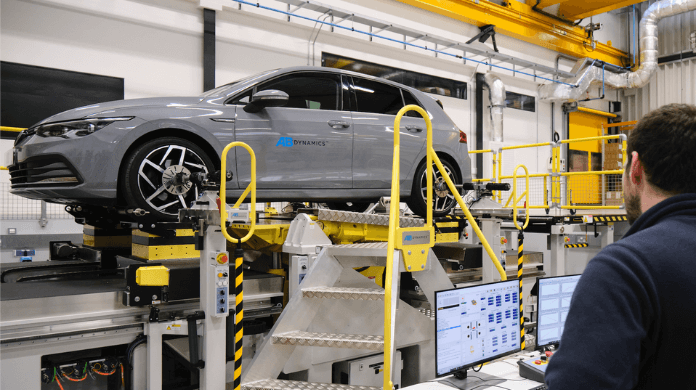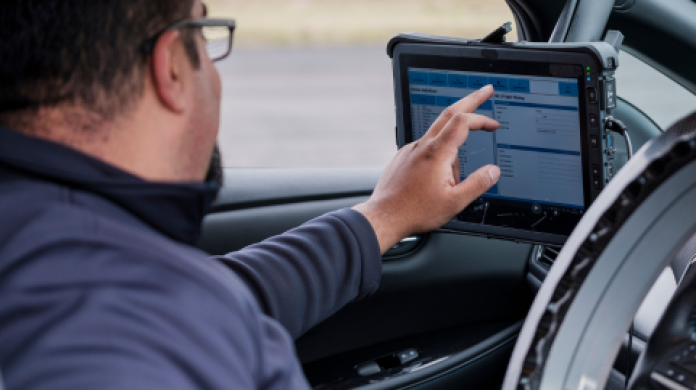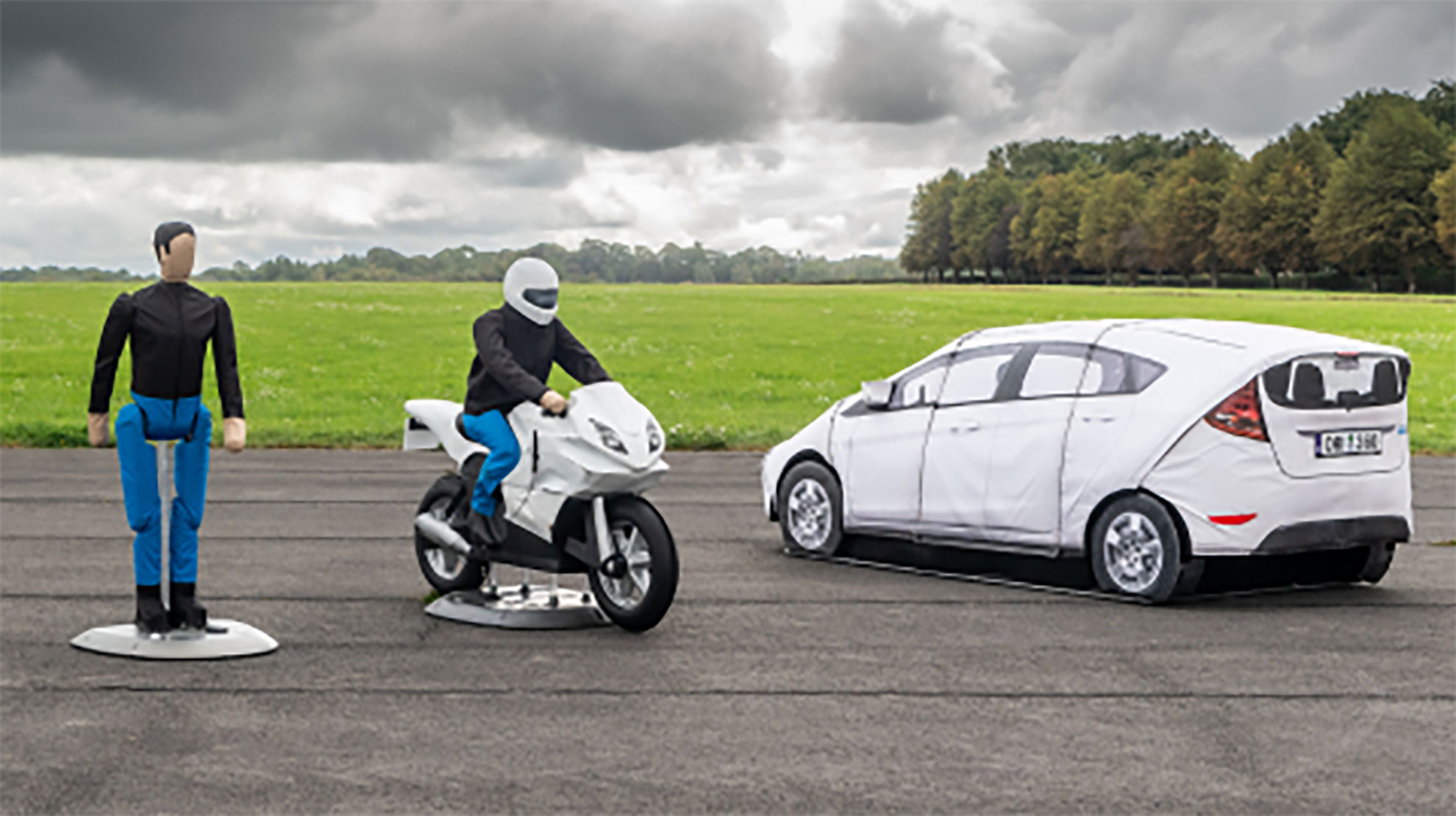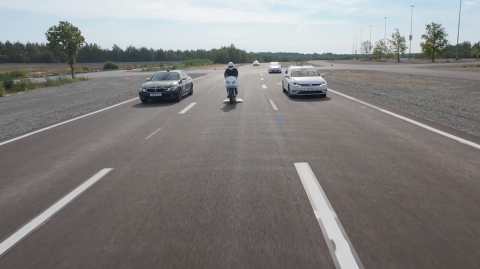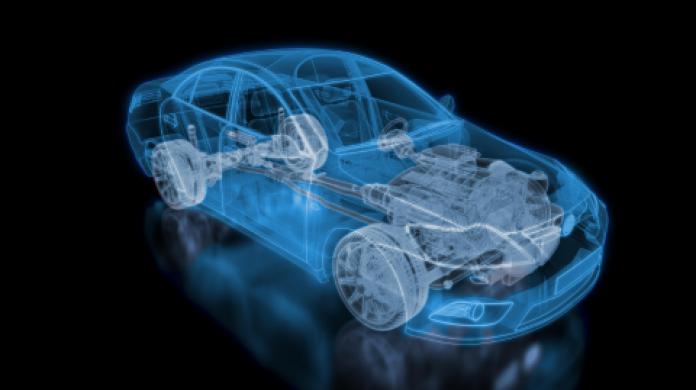With the interest in connectivity and particularly Vehicle-to-Everything (V2X) technology increasing in the automotive industry, Andrew Pick, Business Director of Track Test Systems at AB Dynamics, explains what the technology is, how it would work in practice and how it could significantly improve road safety.
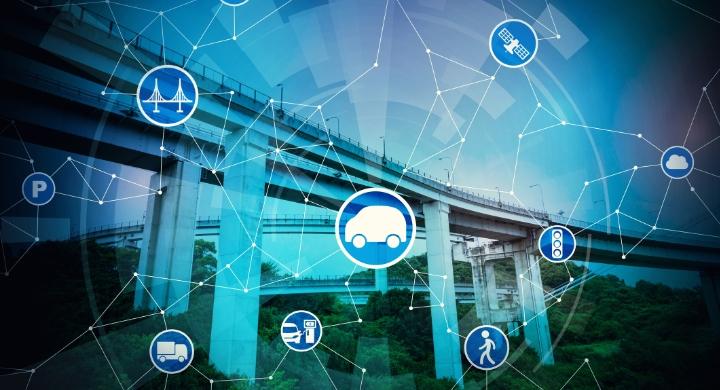
What is V2X technology and how is it benefiting the automotive industry?
In essence, V2X technology enables everything on our roads to communicate together. The aim is to create a collaborative and cooperative capability that enables safety messages to be shared amongst users. It is split up into three different levels; to give information, to increase awareness and to provide warnings.
The key benefit is to improve road safety. By providing vehicles and drivers with more information about their surroundings, they should be more aware of potential hazards ahead and be able to act accordingly.
This technology is seen as an enabler for autonomous vehicles in the future. A lot of what we do as humans when driving is collaborate with other drivers, such as a subtle wave of the hand to allow another car through. Autonomous vehicles need to be able to do this too and V2X is the language they will speak. Except there will be much more information exchanged than could ever be possible with hand signals. For example, you may communicate a hazard ahead to an oncoming driver by flashing your lights. With V2X, the type of hazard and its exact location will be communicated to all nearby vehicles.
How will V2X work in practice?
V2X technology is split up into different elements. For example, Vehicle-to-Infrastructure (V2I) and Vehicle-to-Vehicle (V2V), but also connectivity to other road users.
We are seeing V2V being adopted first as the technology can be integrated relatively easily and rolled out in new vehicle models. For vulnerable road users (VRU) implementation might be based on mobile phone technology and could also be easily integrated into micro-mobility solutions, such as bicycles and electric scooters. Infrastructure, such as traffic lights and variable speed limits, is likely to take more time as these lifecycles are longer and so will need to be upgraded or replaced specifically. In time though, as the network increases, the bigger and more powerful it becomes.
These elements will be continually broadcasting a cooperative awareness message (CAM) or a decentralised environmental notification message (DENM). The CAM provides information such as speed, position and heading of other vehicles. The DENM communicates information on accidents or other hazards on the road.
What are the current limitations of the technology?
As with any new technology, consumer acceptance is key to success. A vehicle equipped with V2X will be receiving a huge amount of data. A driver doesn’t want to be made aware of every single vehicle nearby, only the safety critical information. Deciding what information to share with the driver and how will be critical.
The biggest question for the industry is what “language” should be used. For it to work effectively it must be universal across the elements. Currently, there are two competing standards. ITS-G5 is an ad hoc Wi-Fi, which has already been adopted by Volkswagen and can be found on the latest Golf and all its ID models. The alternative is cellular V2X, or C-V2X, which essentially piggybacks off the existing mobile phone networks, such as 4G and 5G. This choice is a critical crossroad for the industry as manufacturers won’t want to back the wrong horse.
The greatest limitation of the technology though is adoption. For it to have a powerful effect it needs to be on as many vehicles as possible, as well as being built into the surrounding infrastructure. Although legislation is effective by mandating the technology the time scales are long. Consumer tests provide a powerful alternative and Euro NCAP has identified V2X technology as a key safety enabler in its recent roadmap for 2030. This provides great motivation for vehicle manufacturers to adopt the technology more widely.
How quickly are we likely to see V2X technology integrated into Euro NCAP testing?
We don’t know the answer yet. But it is anticipated that Euro NCAP will include a level of V2X in the next protocol update, which is due in 2026. Euro NCAP has stated that it intends to accommodate all forms of connectivity by evaluating safety functions in a technology-neutral way. This essentially means these communications systems will form part of the Euro NCAP test scenarios, regardless of which “language” is used.
They have highlighted a staged rollout of the technology testing. The first is improving driver awareness using V2X by giving warnings to drivers of potential hazards. This is relatively quite easy to test as it is essentially an advanced level of the safety assist features that Euro NCAP currently use, such as speed assist.
The second phase is the use of V2X to proactively avoid collisions, perhaps where there are obstructions out of sight of conventional ADAS sensors. V2X could be used to track that object throughout the test scenario. Again, this wouldn’t be a big challenge as it would complement scenarios that Euro NCAP is already testing.
For example, imagine a scenario where a vehicle operating under assisted driving on a highway is suddenly presented with a stationary vehicle in the lane ahead that was obscured by a lead vehicle, which suddenly cuts out into the adjacent lane. Currently, the assisted vehicle would rely on an AEB (Automatic Emergency Braking) system to prevent a collision. By the very nature of how the system works this would involve a last-minute emergency manoeuvre, which is uncomfortable and unsettling for the vehicle’s passengers and other traffic. With V2X, the assisted vehicle would be forewarned of the hazard and would slow down in a controlled and timely manner.
By providing the vehicle with information earlier it moves the necessary action further down the road to give the vehicle much more time to react. This technology has the potential to improve road safety by significantly reducing the number of collisions.
How will AB Dynamics be helping the industry test the technology and these new test scenarios?
If you want to thoroughly test the technology, it needs to be done in a controlled and repeatable way on a proving ground. As a result, we are adding connectivity to our range of ADAS test platforms. This allows us to augment connectivity during tests so that connected targets and test objects broadcast the same digital signature as a real vehicle would on the public road.
To effectively test connectivity, it needs to be built into the test scenarios. In the same way that we currently define the path and speed of the vehicle, we will also need to define the messages the vehicle broadcasts. To enable this, we have integrated connected hardware to our products which communicate the CAM and DENM information of our targets and the navigation system directly. This is linked to the test scenario, via our software, so we can define the message and the trigger point on demand. We can also log the V2X messages that are being broadcast by other vehicles and the test objects.
We have also developed the connectivity solution to be retrofittable to existing products and to support both the ITS-G5 and C-V2X communication technologies. In fact, the ITS-G5 technology is very similar to what we use on the proving ground already to communicate between the test vehicles and ADAS targets. So, we already have a lot of experience with this technology.
This is a new capability for us. We have already started demonstrating it as part of one of the work packages in the SECUR (Safety Enhancement through Connected Users on the Road) project.
Can you tell me more about the SECUR project? What is the objective?
The SECUR project, coordinated by UTAC, aims to create a coherent proposal for V2X testing and assessment protocols for Euro NCAP. It brings together a consortium of 20 international stakeholders from the entire automotive and V2X ecosystem, who will share knowledge and collaborate through workshops and working groups. Together with AB Dynamics, the partners include Volkswagen, Honda, Toyota, Denso, Bosch and Continental. Our key input into the project is to help define a specification for connected targets to support this testing in the future.
To learn more about the SECUR project, visit https://www.utac.com/documents



